Sunday 16 – Wednesday 19 February 2020
Accommodation: The Metropolitan Hotel & Spa New Delhi booking on booking.com for £265 for three nights in a double deluxe room, inc buffet breakfast.
Delhi was the first stop on our Indian adventure and, after hearing very mixed opinions of the country, I was a little apprehensive about stepping outside the safety of our hotel on the first day. I’ll write another post to sum up my thoughts on India, including tips on how to prepare for your trip, but for now, I’ll say that I ended up loving it. And after a successful first few days in Delhi, I felt a lot more confident to explore.
Billu and his tuk-tuk
Leaving the hotel, we walked out to the street to find a tuk-tuk (or auto rickshaw as I think they’re more commonly known in India) driver to take us to our first destination. While we were on our way, he offered to drive us for the rest of the day for a set price of 1,200 Rupees (about £13) for over six hours. Our driver was called Billu and told us he had friends in MI5 and had driven Jeremy Clarkson in his tuk-tuk. We assumed he was talking nonsense until he showed us a photo of him with Jeremy Clarkson and James May!
Hiring individual tuk-tuks would have been cheaper but having Billu on hand made our first day so much easier. He waited for us at each place we visited so we didn’t have to find and barter with drivers, plus he showed us a few places that weren’t on my list. He did try to take us to a few places to buy things where he would have made a commission but it’s likely each individual driver would have attempted this.
Two days in Delhi
We only had two full days in Delhi to explore and packed in a lot. A 6am start on our 2nd day helped, but it didn’t feel too rushed and we even spent a few hours in bars for David to sample the local crafts.
Here’s the nine things that we visited in Delhi in two days, in order of my preference. Those with an asterisk were covered on day 1 and the others on day 2.
1. Delhi by Cycle tour – Old Delhi
2. Gurudwara Bangla Sahib (Sikh temple)
3. Lotus Temple
4. Humayun’s Tomb*
5. India Gate*
6. Lodhi Colonies – street art*
7. Laxmi Narayan Mandir*
8. Lodhi Garden*
9. Parliament of India*
1. Delhi by Cycle tour – Old Delhi
If you only have a short time in Delhi, I’d suggest taking a cycle tour to cram in as much as possible. We decided on the company, Delhi by Cycle, and I would highly recommend them. The bikes were good, our guide (Priyam) was fantastic and although we booked a group tour, we lucked out and were the only two people so got a private tour. We booked the Shah Jahan Tour which covers Old Delhi.
I was a bit nervous about cycling in Delhi as the traffic is crazy but, with a 6.45am meeting, we caught a few of the quieter hours. An early start also allowed us to see Old Delhi coming to life and the locals setting up for the day. The tour lasted about four hours and we saw so many fascinating places that we’d never have found or felt comfortable venturing to without a guide (though felt safe throughout).
The tour was that overwhelming sensory explosion that I had been expecting from India! Of course, not everything that we saw was positive, but we were shown the ‘real’ Old Delhi. At times it felt like we were intruding behind the scenes and people would give us suspicious looks as we cycled by. But overall, if I smiled at people, I got a big smile in return.
Cycling through the streets and lanes of Old Delhi we saw handcarts, bikes, tuk-tuks, cows, bulls, horses, donkeys, cats, dogs, monkeys, butchers, chickens, spice markets, mosques and temples of all faiths, school kids, kids begging, a square of men looking for cheap manual labour jobs, historic buildings, people sleeping on the streets, piles of rubbish, cooking, chai, delicious food. And so much more – it was hard to take it all in.
A highlight from the tour was visiting Asia’s largest spice market. We left the bikes, avoided being run over by groups of barefoot men pushing handcarts of spices and climbed up stairs (walking by people sleeping) and watched the sunrise (while coughing with the smell of spices) over the spice market and the Fatehpuri Mosque from the rooftop.
Another highlight was seeing Nihang Singhs walk by as we were looking at the Red Temple. Priyam explained that the men, in their fabulous outfits, are part of a very famous and prestigious armed Sikh order. They are semi-nomadic people who leave their family and village for this life vocation. They always carry several weapons and can legally use them if needed.
The tour also took us into Civil Lines, a much wealthier part of town. We stopped by Maidens Hotel, a heritage hotel built during the ruling times of the British Raj. We were greeted by the friendliest security guard with the most amazing moustache! We also had a break for chai at a roadside chai stand in Civil Lanes. I don’t usually drink tea but quite enjoyed this tea with Indian herbs and spices – maybe because there was so much sugar in it.
The last stop on our tour was for breakfast at around 10am. Priyam took us to a small restaurant called Karim’s where we had Aloo Mutter with roti (potato and green pea curry with the most delicious bread).
We dropped our bikes off where we started and Priyam jokingly congratulated us on surviving cycling on the streets of Delhi!
2. Gurudwara Bangla Sahib (Sikh temple)
My first time visiting a Sikh temple (or gurdwara) was to this impressive white-marble temple, near the centre of Delhi. We arrived at around 7pm and followed the signs to the foreign guest office. We were warmly welcomed and offered a free tour. We joined five others in a room, took off our socks and shoes and both the women and men were given headscarves to wear.
Our guide took us on a tour of the temple, giving us insights into the Sikh religion and Gurdwara Bangla Sahib. We visited the main hall and were able to sit in there for a while to watch those coming to worship. The hall was huge with a constant flow of people walking through, quickly paying their respects as they passed through. There were also people sitting on the carpet all around the room, singing along to the hymns. The hymns were performed live by singers sitting in the middle of the room. The sound of singing was almost hypnotic and I could have sat there for hours, listening and people watching.
The most amazing part of Gurudwara Bangla Sahib was the langar kitchen. I didn’t know before our tour that this community kitchen is common in Sikh temples and serves food to anyone, no matter their religion, caste, gender, ethnicity or economic status. The scale of the langar kitchen is phenomenal – 25-30,000 people are served meals per day! 500-600 people can eat in one sitting. Poor people are given meals for free and those who are able to leave a donation. The kitchen is mainly staffed by volunteers.
There was no option to eat there as part of the tour but we walked through the impressive kitchen area, had a chance to flip chapati and saw the massive groups of people filing in for one of the meal sittings.
The tour lasted around 45 minutes and was free. We did leave a tip but our guide was very insistent that we didn’t need to.
3. Lotus Temple
Number three is another temple and another religion I knew very little about – the Bahá’í faith. I had never even heard of the Bahá’í faith before but really like the sound of it:
- A primary theme is achieving world peace through the establishment of unity, justice and equality.
- Bahá’í advocates for racial unity, gender equality, universal education, and harmony of science and religion.
- Baha’is are encouraged to cooperate with their governments and engage with the followers of all religions in a spirit of fellowship.
- It is one of the most universal religions
I wanted to visit the Lotus Temple because of the beautiful building – pure white marble, built in the shape of a lotus flower (the common symbol to Hinduism, Buddhism, Jainism and Islam), with nine pools of water surrounding it. There’s only seven major Bahá’í temples around the world. People of any faith are welcome to visit, pray or meditate.
We arrived at the Lotus Temple at about 3pm and the queue was massive. Most places we visited had a queue for Indian visitors and a queue for foreign visitors – we had to pay more but there was usually no queue. But the Lotus Temple was free and the queue split into male and female (for security searches). David flew along in the male queue, while I was stuck in the female queue, killing time with a few selfie requests! The queue moved quite fast and we were both through security in about 20 minutes.
Once inside, we followed the flow of people towards the temple, being guided by security to put our shoes into a bag and hand them into a clockroom under the path. We then queued to enter the temple and were given some information on the Lotus Temple and Bahá’í faith outside before our group silently entered and were welcome to sit in the temple for as long as we wanted.
Back outside, we sat by one of the nine pools for a while, watching people posing for photos by the water. David went to pick up our shoes while I got a few more selfie requests from groups of girls.
I love this Bahá’í quote: “The earth is but one country, and mankind its citizens.”
4. Humayun’s Tomb
Built in the 1560’s, Humayun’s Tomb was the first garden tomb in India, inspiring other buildings including the Taj Mahal. Humayun’s Tomb was built by Hamida Banu Begum – the grieving widow of Emperor Humayun. Emperor Humayun was the second emperor of the Mughal Empire and the great-grandfather of Shah Jahan, the builder of the Taj Mahal.
Humayun’s Tomb was declared a UNESCO World Heritage Site in 1993. It has over 100 graves within it, giving it the name ‘Dormitory of Mughals’. Humayun’s Tomb sits within a large garden complex which hold other tombs and a mosque.
We spent about an hour there, wandering around the buildings. As we found at most tourist attractions in India, there is a price for Indians and a price for foreigners. Entrance is ₹600 for foreign tourists and ₹40 for Indian. 15 times the price for foreigners seems slightly outrageous but the price converts to around £6.50 so much cheaper than entry prices in the UK.
There were signs around the site advertising an audio guide app called TripMyWay. I don’t think the app is still being updated but it was available for Humayun’s Tomb and a few other sites we visited. It’s a great app (shame if it isn’t being maintained) and there was a really good audio guide for Humayun’s Tomb. I’d recommend downloading the app and the relevant guides while you have wifi and listening to this as you walk around.
5. India Gate
India Gate is a war memorial to the 70,000 soldiers of the British Indian Army who died during World War 2 and the 13,516 who died during the 3rd Anglo-Afghan War. Built in 1921, India Gate looks similar to the Arc-de-Triomphe.
It’s not an attraction that you will spend long at, but India Gate is in the centre of New Delhi so you’re likely to pass by a few times. It’s a really busy spot so be wary of pickpockets.
6. Lodhi Colonies – street art
Lodhi Colony was the last housing estate built by the British Raj in 1940s. I think it is home to Central Government officers and staff. In 2015, the St+Art Festival brought together street artists from India and around the world to transform Lodhi Colony into India’s first open public art district.
We asked Billu to take us here and he wasn’t sure where it was so asked another tuk-tuk driver nearby. We drove around the streets stopping to see some of the street art we passed by. The art is massive, taking up the entire building. I can’t find a map of all the art online but think that there is over 20 pieces. This Google Arts & Culture link shows the artists and explains their work.
7. Laxmi Narayan Mandir
Laxmi Narayan Mandir (or Birla Mandir) is a Hindu temple in New Delhi. This wasn’t on my radar and we only visited on Billu’s recommentation. The temple design was really beautiful and a reminded me of maze. Definitely worth a quick visit.
You’re not allowed to take any photos inside and need to leave your shoes at the entrance and put any cameras or phones in a locker. It’s free to enter and look around but the secrurity guard at the lockers made it very clear that he wanted a tip – and didn’t like our first tip offer!
8. Lodhi Garden
If you’re looking for some green space and are near Lodhi Colonies, Lodhi (or Lodi) Garden is a nice place to escape the busy streets and tooting horns. It’s a historical park and has some beautiful buildings and tombs from the 15th century. We saw people doing yoga and sitting around on the grass – and a lot of people posing for photos in the door and window frames of the beautiful buildings of Bada Gumbad and Sheesh Gumbad in the centre of the park.
9. Parliament of India
Another place that wasn’t on my list but Billu recommended was the Parliament of India. He stopped his tuk-tuk at the entrance and we walked through the security check (waved through by friendly guards) to wander around the complex. I think Parliament House itself is the round building beside the complex – called Sansad Bhavan. We were in the area beside this where buildings like the Ministry of Defense are located. I wouldn’t class this as a must-see but there was a nice view from here across to India Gate.
We only had two days in Delhi so I’m sure we missed off a few of the sights. Please let me know in the comments if there’s anything you’d add to a must-see in Delhi list.

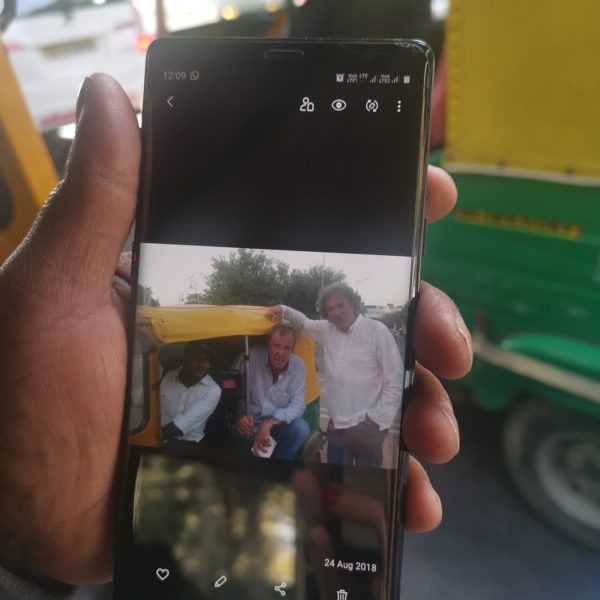
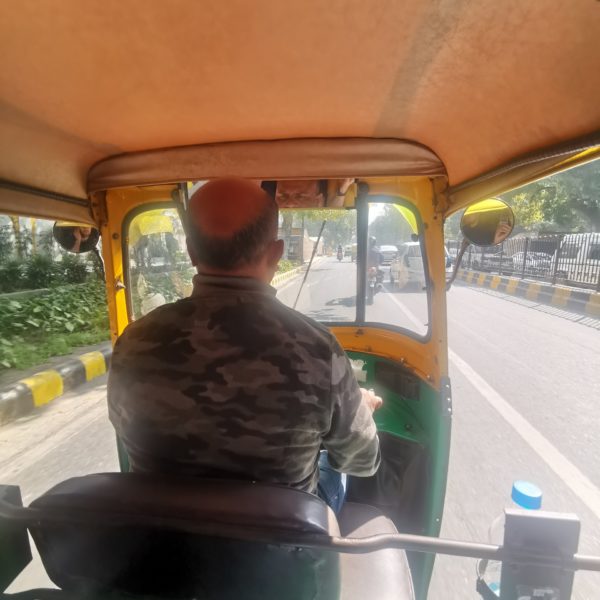





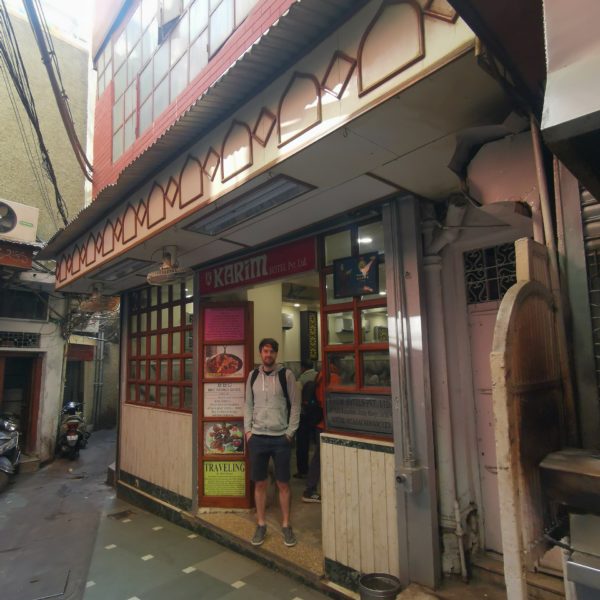


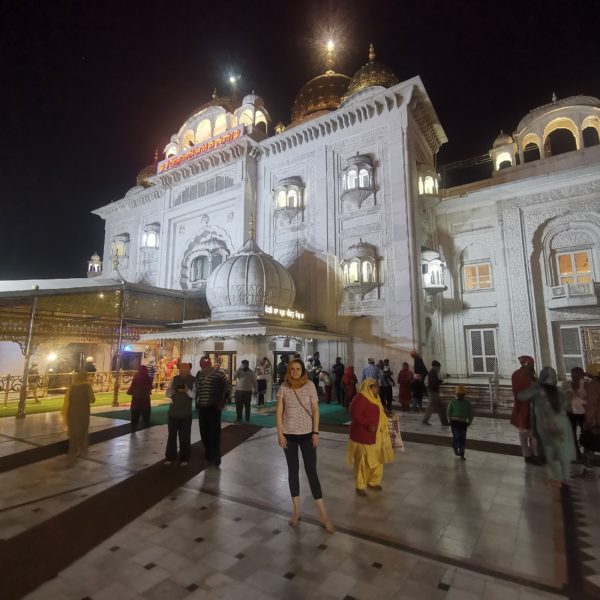
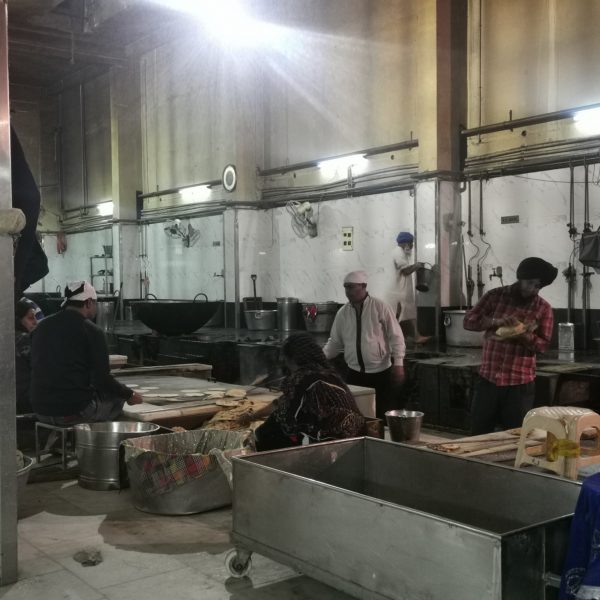
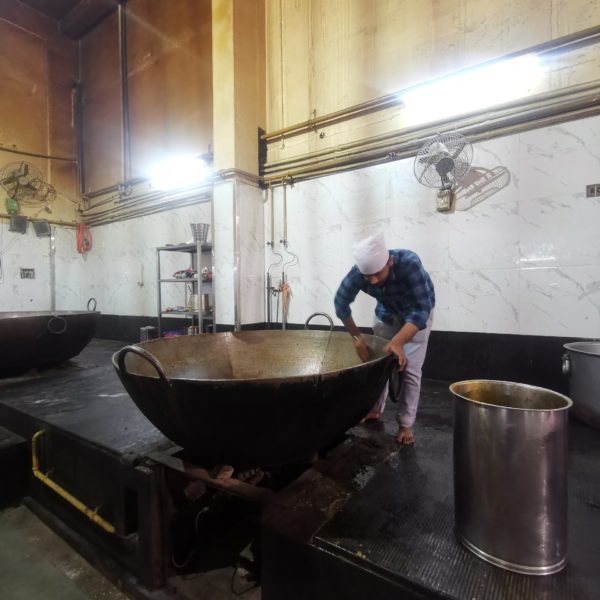




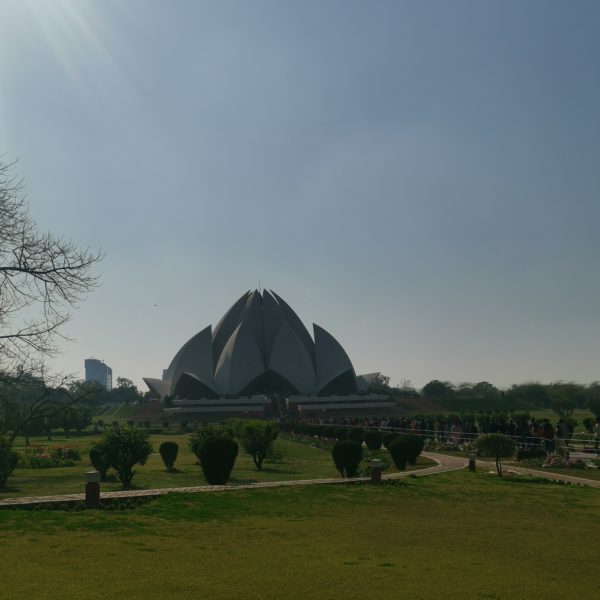
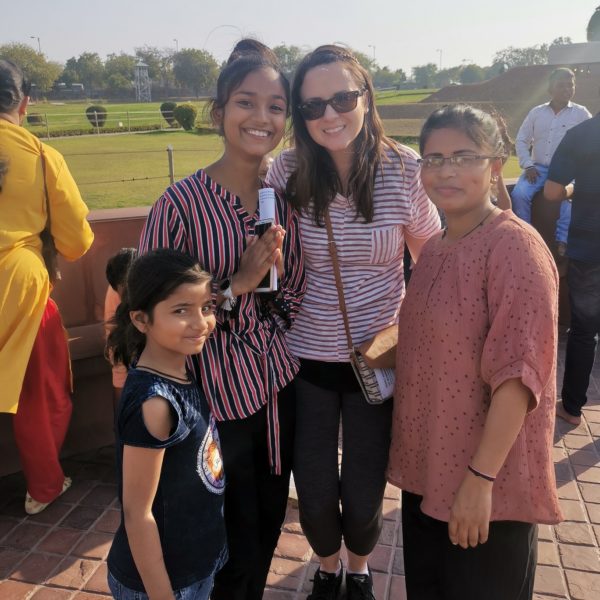

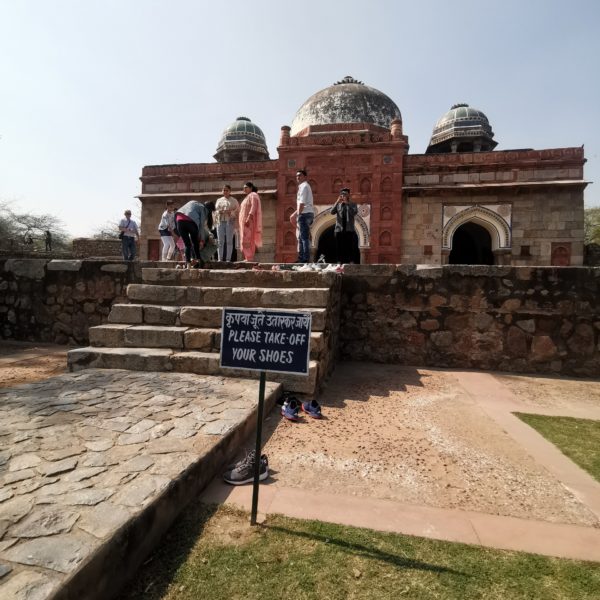
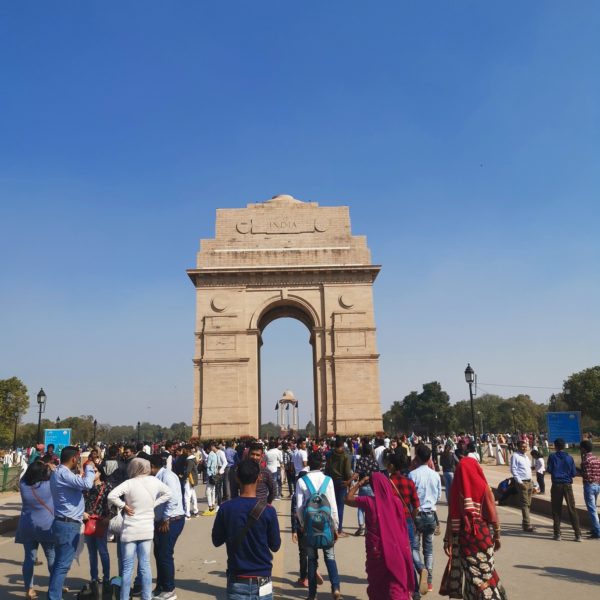





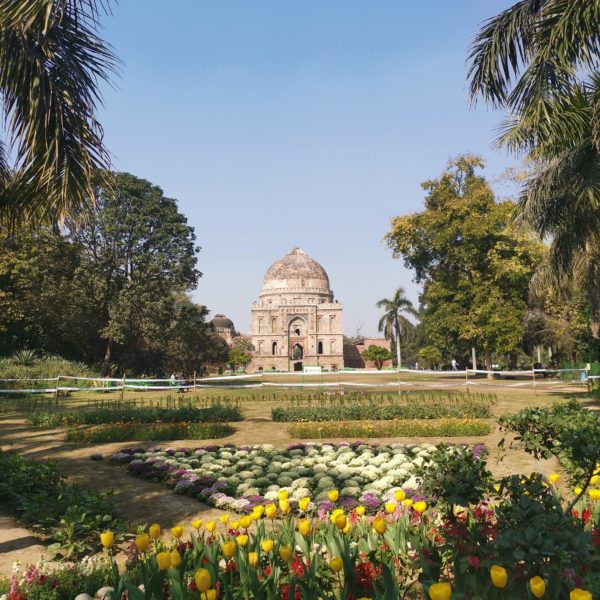




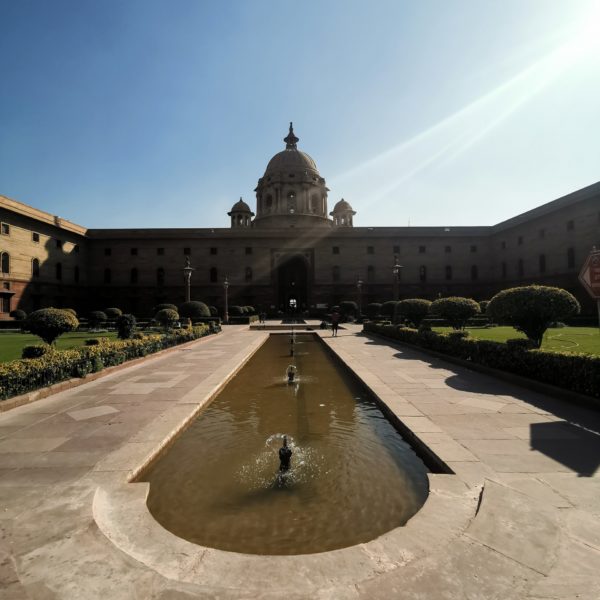
I really enjoyed your blog, it brought back many happy memories. It makes me want to return to India.
Thanks John 🙂 Writing it was a nice way to transport myself back to India and adventuring!